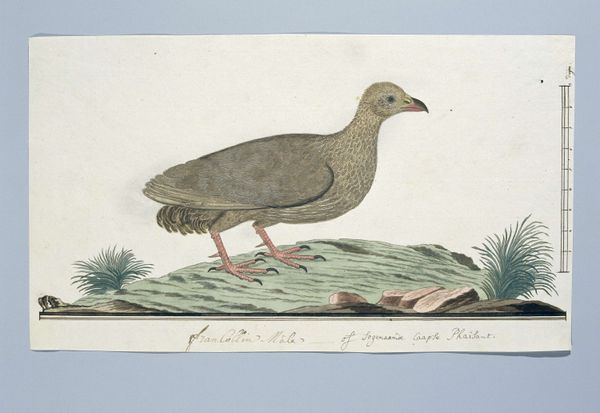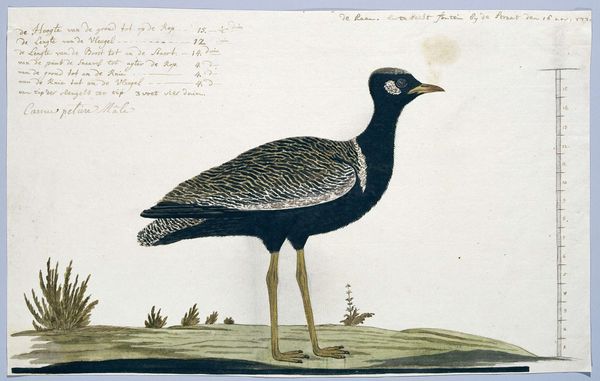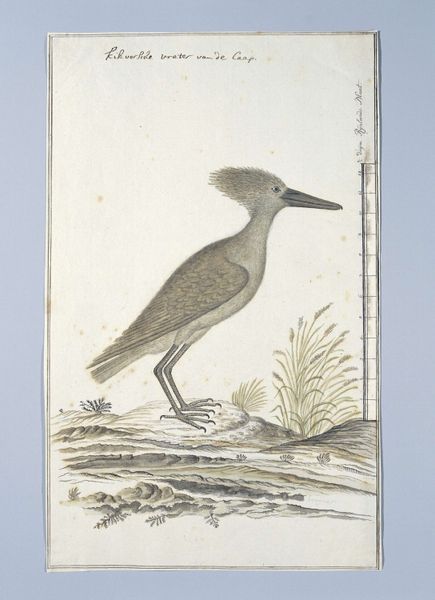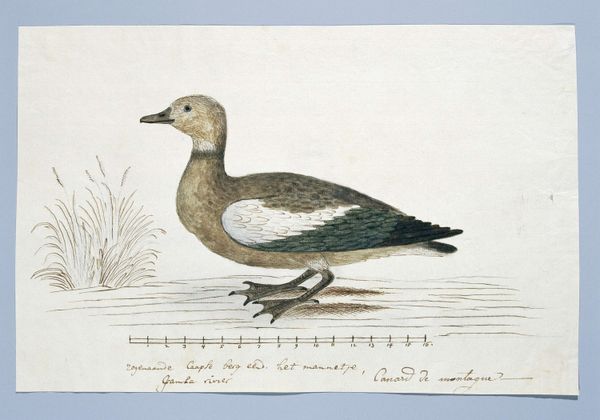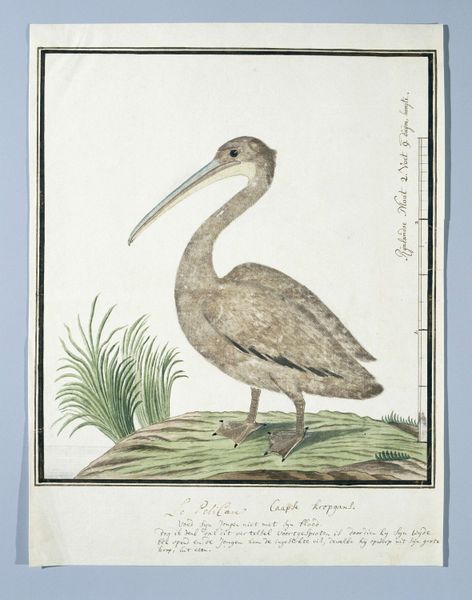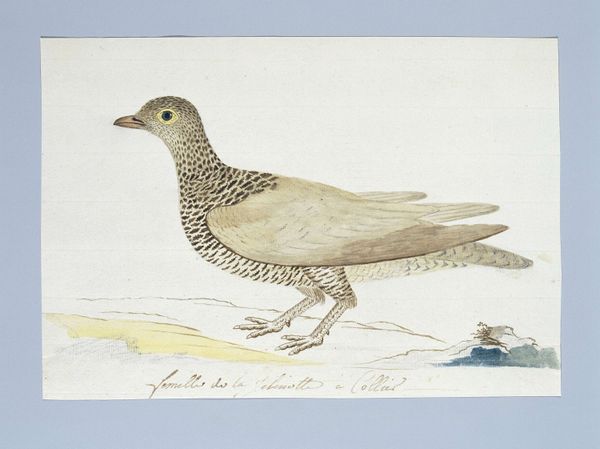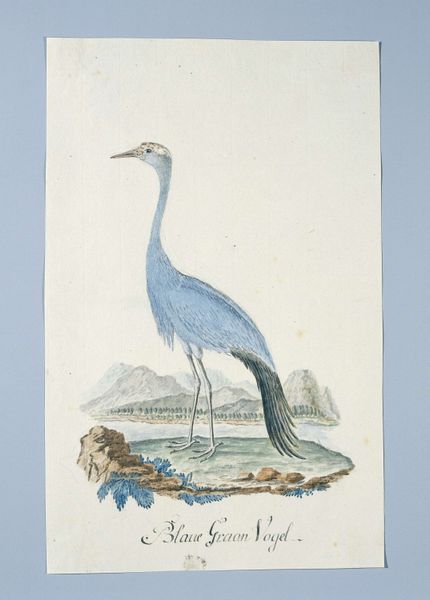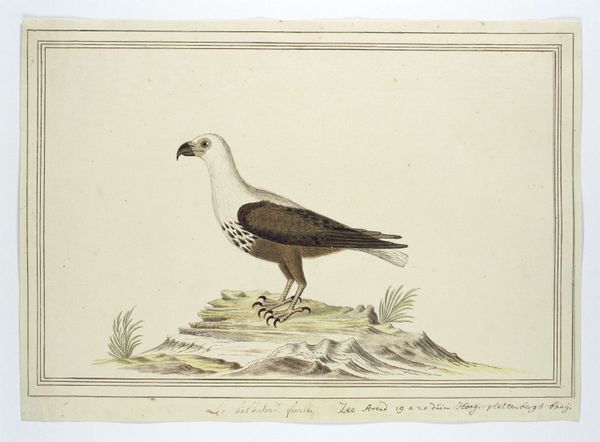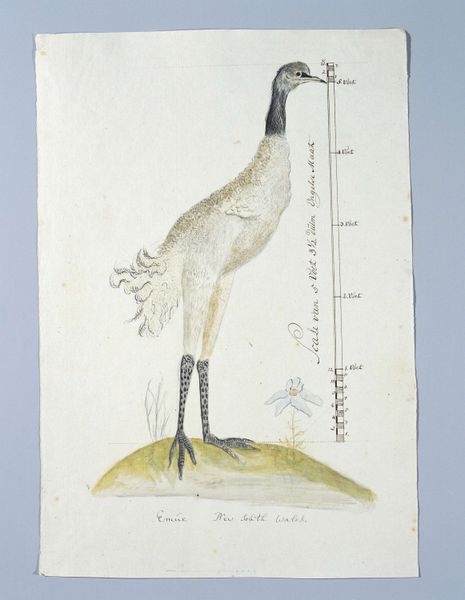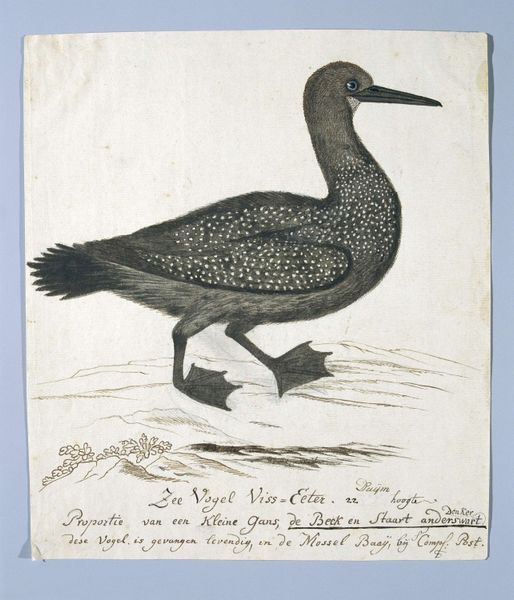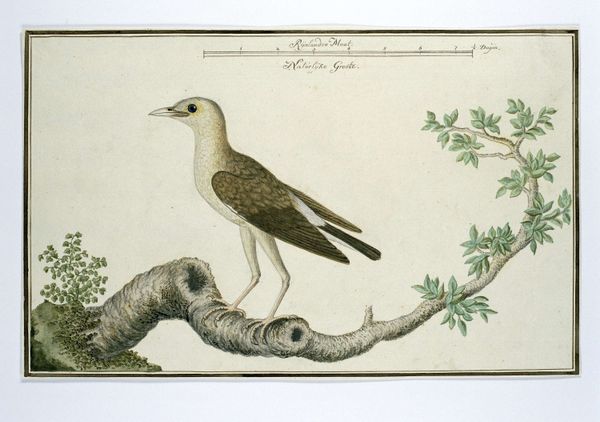
drawing, watercolor
#
vegetal
#
drawing
#
aged paper
#
water colours
#
yellowing background
#
landscape
#
botanical illustration
#
figuration
#
watercolor
#
watercolour bleed
#
watercolour illustration
#
natural palette
#
naturalism
#
botanical art
#
watercolor
Dimensions: height 660 mm, width 480 mm, height 182 mm, width 282 mm, height mm, width mm
Copyright: Rijks Museum: Open Domain
Curator: This delicate watercolor drawing is titled "Struthio camelus (Common ostrich)" by Robert Jacob Gordon, dating from possibly 1777 to 1786. The yellowing paper and natural palette lend it a wonderfully aged feel. What are your initial impressions? Editor: Well, formally speaking, it strikes me as rather linear. The subject, a juvenile ostrich, is centrally positioned, with strong emphasis on contour over volume. And look at how the artist uses very precise lines to define the plumage—almost pointillist, but with washes of colour instead of points. Curator: Absolutely, and the linear quality connects to the practice of scientific illustration at the time. Gordon, as a military commander and explorer, was deeply involved in documenting the natural world of Southern Africa. His images were often about classification. It's interesting to consider how this impulse impacts the aesthetic. It also gives context to the addition of the line drawing at the top showing measurements of the animal, something more than just aesthetic that informs the artwork. Editor: Yes, precisely. It's almost as if the artist is using the watercolour as a form of…notation. Note how little emphasis is placed on establishing a real sense of depth, beyond the very rudimentary horizon line, which allows for scientific study that wouldn’t be present otherwise. The composition and use of color reinforces this; everything leads us back to the form of the ostrich itself. Curator: True. It prompts one to ponder about the labor of early scientific illustration, it makes me think about the economics and science behind this production: the consumption of knowledge through the means of recording. Editor: Speaking of labour, I’m intrigued by how the materials themselves, the watercolor and paper, perform within the composition. See the watercolor bleed at the bird's feet and the edges of the plant life and terrain, the watercolour illustrations adds so much life, so much emotion within the context, without sacrificing scientific value. Curator: Good point. The naturalism softens the potentially rigid scientific nature of the endeavor. It feels like more than just clinical observation; the hand of the artist is present. Editor: Ultimately, I appreciate how the artist melds scientific inquiry with—perhaps unintentionally—a distinctive visual style. Curator: Agreed. It allows us to glimpse both the object of study and the conditions of its creation and impact.
Comments
No comments
Be the first to comment and join the conversation on the ultimate creative platform.
